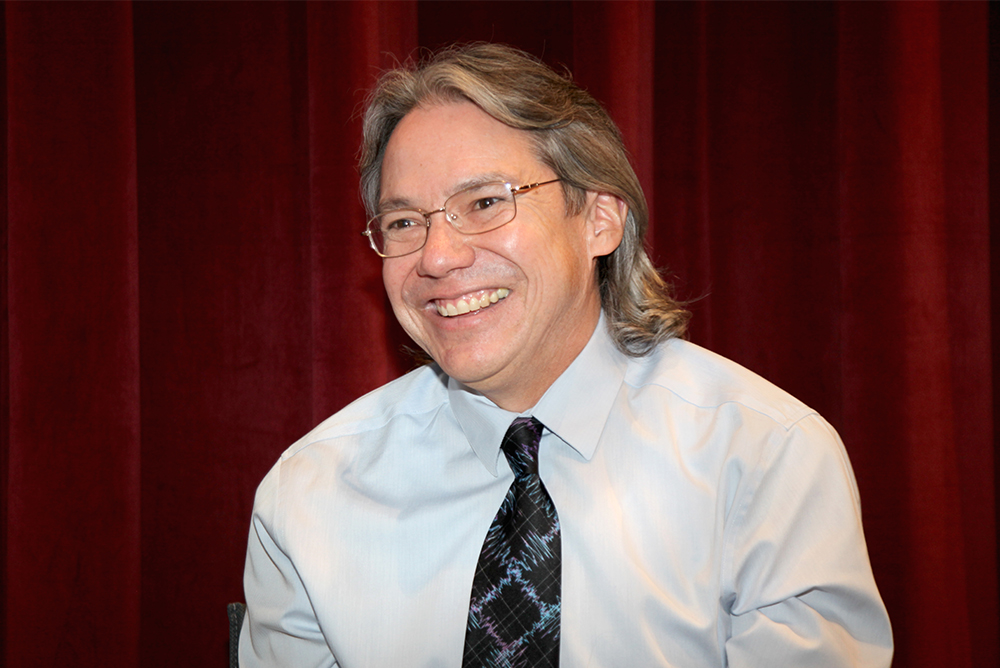
Photo by Aaron Salcido.
Corey Gray is the senior operations specialist of LIGO Hanford Observatory and part of the group of researchers that confirmed the existence of gravitational waves, marking a major discovery for the fields of physics and astronomy. Before joining the Zócalo/Experience ASU event “How Should We Prepare for Aliens to Arrive on Earth?,” he joined us in the green room to chat about the movie Prey, his favorite scientific word in Blackfoot, and exploring the Lost Coast of Northern California.
What celestial object do you relate to the most?
I’m half Blackfoot, and in our culture we get several names during our lives. I was given a name when I was a baby, or just a kid, and so I got my second name, literally, just a couple of weeks ago. My second name is Makoyohsoko, which means Wolf’s Path, and that’s related to a Blackfoot story about the Milky Way. So, I’m kind of connected to the Milky Way now.
What’s your favorite scientific word in Blackfoot?
My mom makes new Blackfoot words every time she does a translation. Seeing the literal meaning of them in English, it’s like poetry. There are some that are really cool. Some of my favorites are: abuduuxbiisiiya for gravitational waves (or “stick together waves”), and mugagyabiguwAx for scientists (or “all-encompassing smart people”).
What’s your hidden talent?
Building a wooden kayak for the first time during the pandemic.
Do you have a favorite science fiction story?
I’m a total sci-fi nerd. Most recently, I loved the movie Prey. I’ve watched that I think six or seven times. I got to see it with my mom recently, too. It’s just an amazing movie, the story they came up with and the actors—there’s some Blackfoot people, people from my tribe, who were in it as well. If you watch it in the Comanche dub, you get to learn a lot more different things that aren’t in the movie—just more to the story that you get to learn about, which is cool.
What’s the most beautiful place on earth?
I guess it would have to be the Lost Coast of Northern California because I always find myself going there and just spending days hiking it. And keep going back. There’s so many places on Earth though. This world is such a beautiful place.
What’s the coolest part of working at the LIGO Hanford Observatory?
Being there when detections roll in, like, if you’re on shift when they happen and you get alerts for them, that’s one of my favorite things. We have a computer, and it speaks to us, like in a computer voice, and it says “G-wave candidate.” As soon as we hear that, we have to call other people and login and see if it’s a real signal.
When do you think humans will first encounter extraterrestrial life?
I don’t know, probably within 50 to 100 years. I can go either way—it can be never or it could be they’re already here!



